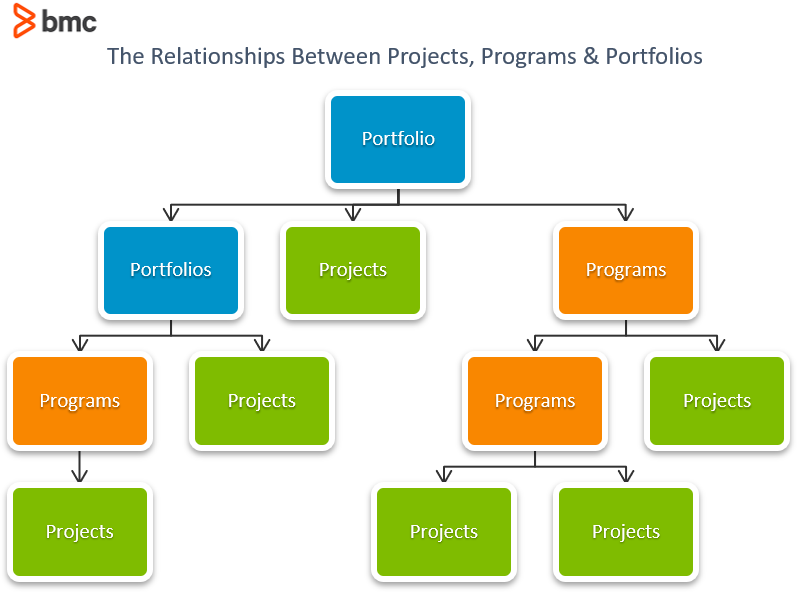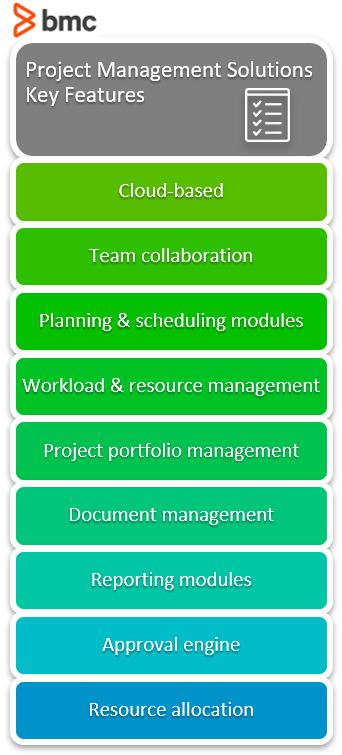IT departments support the critical business systems that your organization relies on to move business forward. An IT service management (ITSM) solution helps make your tactical tasks easier.
But how do you manage your department’s projects?
In this article, we’ll discuss how you can improve IT project management by leveraging an enterprise-wide project management solution that incorporates integrated project management (IPM) and portfolio project management (PPM) methodologies. We’ll cover the following:
- Integrated project management (IPM)
- Portfolio project management (PPM)
- Project Management vs IPM vs PPM
- Choosing PM solutions
What is Integrated Project Management (IPM)?
In traditional project management (PM), processes for achieving project requirements are often local to that project. Different projects or teams may run their projects without coordination of how their actions affect other projects or the overall organization. IT department projects are typically run differently than production team projects, using different knowledge, skills, tools, and techniques.
Unfortunately, different departments/teams don’t always share their project tools and knowledge.
Integrated project management (IPM) expands project management methodology to include processes and considerations on an organizational scale. IPM requires that all business units both:
- Employ a consistent project management approach and processes
- Share project knowledge
IPM defines a collection of organizational processes to ensure different project elements are properly coordinated.
(Compare processes to practices.)
Integrated project management isn’t just about a single project. It implements a holistic approach to project management across the organization that requires:
- Understanding and using overall organizational practices and processes during project execution
- Fostering cooperation and coordination between departments and teams
- Sharing information between teams and projects
- Compromising between competing alternatives and objectives
IPM’s approach integrates all individual project knowledge area and process group items with organizational processes and considerations (including other projects) to achieve success and meet organizational goals. Also known as collaborative working, IPM attempts to use organization-wide processes and knowledge sharing to effectively select, coordinate, and synchronize project efforts for maximum organizational business value—all of which can be an excellent addition for IT project management.
What is Portfolio Project Management (PPM)?
A portfolio encompasses a collection of projects and/or programs that are managed as a group to achieve strategic and financial objectives. Portfolio items are grouped together to ensure the effective governance and management of project and program work to meet organizational priorities and strategies.
Project portfolio management (PPM) is the centralized management of one or more project portfolios to achieve strategic and financial objectives. PPM shares many IPM goals, including the ability to measure and select all project investments against their costs and the organization’s strategic goals.
Per the Project Management Institute (PMI), rather than focusing on implementing projects the “right way”, PPM focuses on implementing the “right projects and programs” that satisfy organizational goals. PPM fits perfectly with IPM’s collaborative approach of performing project management and integrating project knowledge and processes on an organizational scale.
And considering that an IT project list is just a portfolio of technologies designed to meet organizational priorities and strategies, it makes sense to integrate PPM into IT project management.
(Read our full explainer on Project Portfolio Management.)

Project Management vs Integrated PM vs Portfolio PM
The differences and similarities between PM, IPM, and PPM can be summed up as the following:
- Project management (PM) is a temporary effort that enables business value through the creation of a unique product, service, or result.
- Integrated project management (IPM) expands project management methodology to employ a holistic approach spanning the organization, using enterprise-wide organizational practices, processes, and shared knowledge to ensure different project elements are properly coordinated.
- Portfolio project management (PPM) is the centralized management of project and program groupings to achieve strategic and financial objectives.
These three practices overlap and build on each other, from individual projects to common practices, processes, and shared knowledge to strategic and financial project management.
Each methodology’s needs should be considered together when looking at an IT and organizational project management solution.
Enterprise project management solutions for IT
Now that we’ve defined what IPM and PPM methodologies bring to IT project management, let’s talk about how you can improve IT PM implementations by leveraging an enterprise-wide project management solution.
There are many good and popular enterprise project management solutions suitable for IT, including:
- Celoxis
- Cloud Coach
- Jira
- Microsoft Project
- Monday
- Oracle NetSuite
- Smartsheet
- Wrike
Using an existing PM solution
You’ll want to look for a project management solution that can be used not only for the IT department, but for non-IT departments and projects. Taking an enterprise-wide view allows IT to both:
- Share common processes and share knowledge with other business units (IPM viewpoint)
- Manage IT projects as their own portfolio or as part of an enterprise cross-functional portfolio (PPM viewpoint)
Check with your Project Management Office (PMO) to see what, if any, project management software they are using to manage non-IT projects. You may already be familiar with using their software for projects that have IT department components but aren’t IT-only projects, such as:
- Mergers and acquisitions
- HR department consolidation
- Audits
- New production floor machinery
- Facility expansion and closing
You may want to consider using their existing PM solution for managing IT-only projects, as it may already cover the PM, IPM, and PPM functions discussed here.
Choosing a new PM solution
If no centralized enterprise project management solution exists, then it’s time to look for an enterprise PM solution that can be used for managing IT and non-IT projects across the organization.
First, look for software that supports standard project management functionality in a PM framework. Many project management packages align nicely with the Project Management Institute’s (PMI) Project Management Professional (PMP) standards for waterfall, agile, or hybrid project management.

In general, look for dedicated PM software that provides the following features:
- Cloud-based solutions are, in our opinion, superior to in-house solutions for enterprise project management. Cloud solutions are easier to manage and deploy to any global location. Just as email systems, file serving, CRM, and other critical solutions are migrating to the cloud, so should project management systems.
- Team collaboration to organize project documentation and project communications in one place, allowing team members to track project progress in real time.
- Planning & scheduling modules (timeline management) to visually manage and compare portfolio and project timelines, including Gantt charts.
- Workload & resource management to assign resources to project tasks and to monitor each resource.
- Project portfolio management to manage program and portfolio project groupings to achieve corporate objectives for PPM.
- Document management for knowledge sharing to share project documents and to provide access to common practices and procedures for PM and IPM.
- Reporting modules for relaying project progress
- An approval engine that allows you to dynamically route completed project documents based on business rules, and to automatically send updated notifications based on the approval status.
- Resource allocation which allows you to quickly see which IT resources are working on what projects and who is available to work on new projects.
Adding a dedicated project management solution that can also be used in the enterprise provides additional visibility into several key components of your IT function. Aside from the features and benefits listed here, it provides you with a clear understanding of what each team member is working on, and for how long.
Aligning development & enterprise projects
Using an enterprise project management solution for IT projects also allows you to align IT development with enterprise project management because it:
- Helps provide standard processes for handling IT requests, a la IPM.
- Enables IT projects to be managed and evaluated as part of a portfolio or program via PPM.
- Allows IT projects to incorporate standard PM practices for IT management—such as project charters; project management plans; and scope, schedule, cost, quality, resources, risk, procurement, and stakeholder management plans—into your IT project management.
- Provides templates for change control and knowledge sharing.
With new technologies and methodologies such as distributed systems, DevOps, Agile, Lean, Kanban and cross-functional teams, with IT staff reporting to business units and vice versa, IT is no longer a siloed function (and it shouldn’t be).
IT projects should be managed using the same processes and tools—including the same project management solution—and sharing knowledge across the organization. That’s a best practice that all enterprise IT functions should live by.
Related reading
- BMC Business of IT Blog
- BMC Service Management Blog
- Software Project Management Phases & Best Practices
- PMP & Other Project Management Certifications
- What Is ITBM? IT Business Management Explained
- How Service, Business Relationship & Product Management Work Together
These postings are my own and do not necessarily represent BMC's position, strategies, or opinion.
See an error or have a suggestion? Please let us know by emailing blogs@bmc.com.






